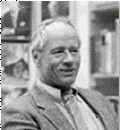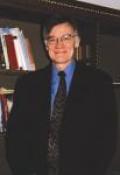An American widow encountered Hitler and Mussolini during a world-wide art tour in the years before war broke out.
“Hitler looked cold and ordinary and Mussolini warm and expansive,” Mrs. Gifford later recalled.
Disconsolate and recently widowed, Marguerite Gifford penned a poem in 1937, summing up: “My thrill in life, has ceased to be... my husband will not come to me.”
American colonial elites surrounded themselves with paintings, furniture, and other objects to shape their identities and to set themselves apart from others.
The man who may be America’s greatest artist liked to fend off the curious with the statement “My life is all in my works. ” He was right, but the works and the life take on new poignance with the release and exhibition of a once-private collection of his letters, photographs, and sketchbooks.
Thomas Eakins is now recognized as one of the greatest American painters, but in his own era his reputation was uncertain.
Charles Sheeler found his subject in the architecture of industry. To him, America’s factories were the cathedrals of the modern age.
In the fall of 1927 the Philadelphia advertising agency N. W.
It took half a century for his critics to see his subjects as clearly as he did; but, today, he stands as America’s preeminent portraitist.
John Singer Sargent, in common with Holbein and Van Dyck, was an international painter of portraits who did his major work in England.
Among the nicer aspects of working at American Heritage is that the editors are paid to look at paintings. We review exhibitions, auction catalogs, museum brochures, and art magazines in hopes of finding historical illustrations for our stories.
John White Alexander began his career as an office boy at Harper’s Weekly and rose to be a leading painter of his generation, especially of its women.
In the early 1900s, John White Alexander was considered one of the four preeminent American painters of his day, the peer of Whistler, Sargent, and E. A. Abbey.
A young artist takes on a venerable genre.
Few aesthetic disciplines are as exacting as marine art. Consider the problems. The painter of portraits or landscapes can return to the subject again and again to verify shape, color, tone. But water is a moving, constantly changing element.
From the North Woods to New Orleans with an artist-reporter of the last century
IN THE ERA BEFORE PHOTOGRAPHS could be reproduced in the press, newspapers and magazines sent “special artists”—the photojournalists of their time—out on assignment. Their on-the-spot drawings were then made into engravings.
Turn-of-the-century American painters came to Venice for its ancient splendors and pearly light. In a few years they captured its canals, palaces, and people in a spirit of gentle modernism that looks better than ever.
FOR MUCH OF THE history of the United States, American artists have looked across the Atlantic: for better schooling than they could find at home, for a culture in which art was valued more highly than it was in Puritan America, and often
Most surveys of American painting begin in New England in the eighteenth century, move westward to the Rockies in the nineteenth, and return to New York in the twentieth. Now we’ll have to redraw the map .
TAKING STOCK of painting in the South in 1859, a critic for the New Orleans Daily Cresent concluded glumly, “Artist roam the country of the North, turning out pictures by the hundred yearly, but none come to glean t
Antonio Jacobsen, the most prolific of all American marine artists
“Ship portraiture” is a unique form of painting, modest in purpose but exacting in execution, long scorned by serious artists yet calling for particular knowledge and skills often beyond the ken of the fine artist.
…so Lincoln joked. Actually he was eager to pose for portraits.
George Eastman didn’t think the posters the movie companies supplied were good enough for his theater. So he commissioned a local artist to paint better ones.
IN 1922 GEORGE EASTMAN, the great photographic industrialist, built an elaborate movie house in his hometown of Rochester, New York.
A contemporary artist re-creates two and a half centuries of the life of a North Carolina county
Last March a letter arrived at AMERICAN HERITAGE from Barry G. Huffman of Hickory, North Carolina, a subscriber who had some kind words to say about the most recent issue of the magazine.
The famous painter of Eastern city life also captured the sunny, spacious world of the Southwest
When John Sloan—one of eight Eastern painters known as the Ashcan school—first came to Santa Fe in 1919, he was looking for new subjects to paint. He found a remote mountain town of about seven thousand citizens, two-thirds of whom were Spanish-speaking.
Though he invariably has his way with the small-town girls in a thousand indestructible smutty stories, the actual life the traveling salesman led was not nearly so gleeful.
In the thirties the WPA decided it would be good to know just what the insides of Victorian homes, offices, and stores had looked like. The artist-historian Perkins Harnly created a sumptuous record.
He loved women so much he painted wings on them. After years of neglect, he is now being appreciated.
VISITORS TO a performance by the Kneisel String Quartet in New York City one autumn afternoon in 1894 may well have been distracted from the sonorities of Beethoven by a strangely dressed man in the audience.
An Autumn Harvest of American Still Lifes
The 1831 painting exhibition at the Boston Athenaeum was the cause of much rejoicing on the part of the critic for the prestigious North American Review , with a single salient exception: he had no use for still lifes.
The Smaller, Greener Baltimore of Francis Guy
Sometime in 1799 a luckless British-born artisan “boldly undertook,” in the words of the portraitist Rembrandt Peale, “to be an artist, although he did not know how to draw.” The result of this unprovoked commitment is a delightful series of portraits of the
Declaring himself a “thorough democrat” George Caleb Bingham portrayed the American voter with an artist’s eye—and a seasoned politicians savvy
Between 1847 and 1855 George Caleb Bingham completed a half dozen or so canvases that are among the most unusual and interesting documents in the history of American painting.
The 407-ton packet Ellerslie left New Orleans on December 30, 1848, on a royage that now would be forgotten save for the discovery of a series of watercolor sketches done by one of the passengers, James
By the late 1850’s Frederick Church was the most popular artist in America.
The man was Diego Rivera, seen from the rear on his scaffold in an uncharacteristically modest self-portrait at left, and what he was doing in America was expressing his gargantuan contempt for capitalism and its precepts.
A gathering of turn-of-the-century paintings
Our cities began as muddy accidents.
High on a hill above the Hudson River Frederick Edwin Church indulged his passion for building an exotic dream castle
“Sometimes the desire to build attacks a man like a fever—and at it he rushes,” the successful young landscape painter Frederic Edwin Church wrote from abroad to his friend and patron William H. Osborn in 1868.





